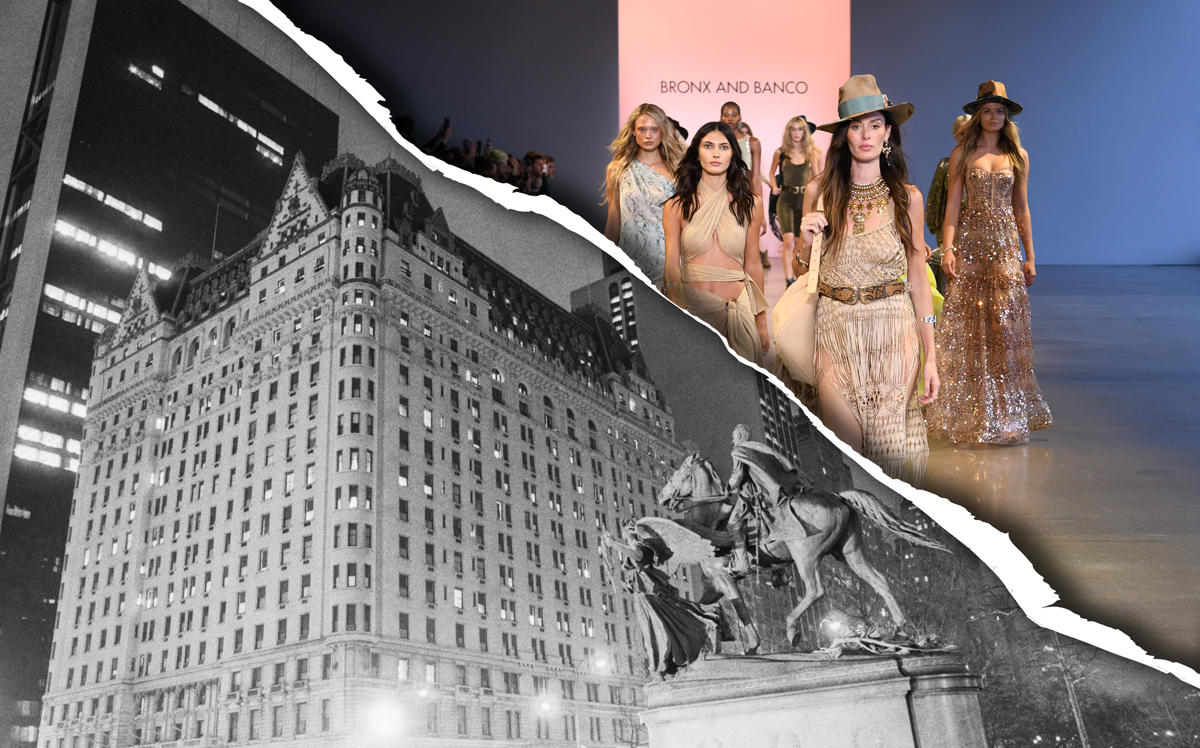Real estate pros who wouldn’t know a legit Hermes bag from a Canal Street knockoff couldn’t help but take notice last month when designers from New York Fashion Week started backing out of events they had scheduled at Hudson Yards.
The Related Companies had long sought to turn its Far West Side luxury complex into a destination for cultural events like NYFW.
But as the history of Fashion Week has shown, the couture crowd can be a fickle one.
Going back to the early years of its founding in the 1940s,the event alternated between the Plaza and Pierre hotels, with writers and editors housed on-site, no sprinting all over town in spindly heels required.
Over the decades, as NYFW’s profile has gone full supernova, the central hub has evolved, too. From upper crust Uptown to gritty 1970s Soho; a pit stop in Midtown to the iconic Bryant Park tents; Spring Studios to the outer boroughs and far-reaching corners of the Internet – the real estate setup has been wide-ranging.
Though it spawned similar concepts in other cities the world over, Fashion Week continued to take place twice a year at the Plaza or Pierre into the 1960s. The Council of Fashion Designers of American (CFDA) began organizing the event after its founding in 1962. Over time, as the shows and fanfare surrounding them expanded, the event outgrew the Plaza and the Pierre in all senses; along with New York City’s creative class, it moved downtown in the 1970s into the ‘80s, where collections were often presented in what were then unconventional spaces – clubs, lofts, restaurants and warehouses to name a few.
In fashion world lore, the move back uptown in the 1990s came as a direct result of safety hazards. Fern Mallis, a former executive director of CFDA, was attending a Michael Kors runway show in downtown Manhattan when a piece of plaster cracked loose from the ceiling and crashed into the catwalk. Though the models soldiered onward, that incident – along with an infamous power outage at another show in the same early ‘90s era – forced a change of venue.
Mallis took on the challenge of finding a consolidated, central location for the main shows. In 1993, NYFW took place at what was then the Macklow Hotel on 44th Street; the following spring of 1994, the event moved to the now-iconic white tents at Bryant Park. The event remained centralized at Bryant Park until 2010, when it moved to Lincoln Center.
During the 2000s, NYFW has changed hands more times than locales: IMG purchased the showcase in 2004, bringing on major sponsors like Mercedes Benz and Olympus. In 2013, IMG, along with NYFW events, were acquired by William Morris Endeavor and Silver Lake Partners. After the February 2015, Lincoln Center declined to renew its contract with WME/IMG – a shift that unsettled some but dovetailed with a preexisting trend of designers decamping to other venues by choice.
After that, Fashion Week briefly moved to two official venues downtown – the Dream hotel and Skylight Clarkson Square in Hudson Square – before relocating to Spring Studios in 2018. That venue has exerted a gravitational pull on designers, though some still elect to host their shows elsewhere. This year, designer Kerby Jean-Raymond will show his highly anticipated Pyer Moss collection at the historic Kings Theater in Brooklyn, while Tommy Hilfiger will parade his Zendaya-inspired collection through the Apollo Theater in Harlem and Rihanna takes Fenty to the Barclays Center.
